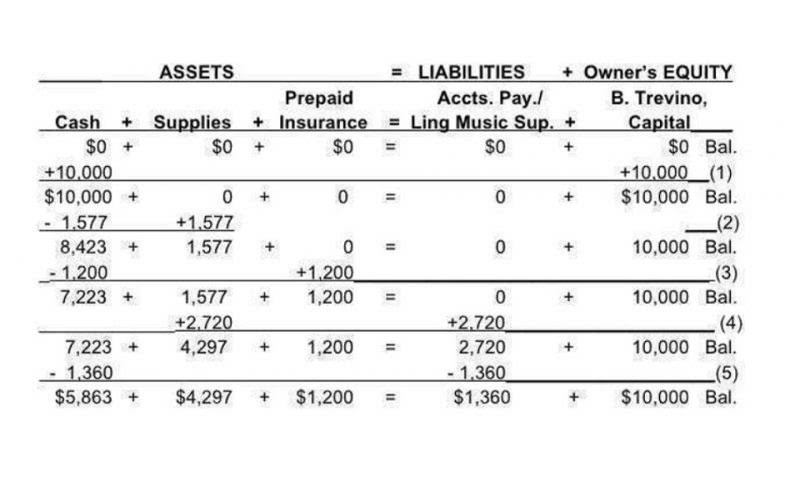How businesses report their financial performance to stakeholders is an important factor in accounting and overall financial management. Businesses can either use the cash basis accounting method or the accrual method. The decision is based on a lot of factors, however, it majorly depends on the size of the business. Income and expenses are reported only when cash changes hands in cash basis accounting. This can lead to significant fluctuations cash basis accounting measures income based on in financial reports based on the timing of receipts and payments. Cash basis accounting recognizes revenue and expenses when cash is actually received or paid out.
Financial software that helps you run your business and pay your team better.
- With cash accounting, revenues are written only when cash comes in and expenses are only documented after cash is paid out.
- These are not used in cash accounting, as transactions are recorded only when cash is exchanged, so there’s never any outstanding payments or receivables.
- The cash basis system is usually used in small business accounting because of its simplicity and ease, while the accrual basis system provides a more accurate picture of your business performance.
- In commerce, “cash” refers to any money you receive, even if it’s not in the form of physical currency.
- For investors, it’s important to understand the impact of both methods when making investment decisions.
This section examines the specific benefits and drawbacks of cash basis accounting, detailing how it impacts business management and what challenges may arise https://www.bookstime.com/articles/agricultural-accounting from its use. The cash method of accounting is marked by its simplicity and ease of understanding. Cash basis bookkeeping is a straightforward accounting strategy, prioritizing simplicity and a clear snapshot of cash flow.
- Jami has collaborated with clients large and small in the technology, financial, and post-secondary fields.
- Your client pays a 50% deposit, and you agree to have half of the project deliverables ready on April 30th, with the remaining deliverables to the client by May 30th.
- Cash basis accounting only shows you how much cash you’ve brought in or paid out.
- Instead, it is recorded once the earning process is complete and the business has fulfilled its obligations to the customer.
- It is because of accrual accounting that we have the revenue recognition principle and the expense recognition principle (also known as the matching principle).
Tax Implications Breakdown with Cash Accounting Method

Under this method, revenues and expenses are recognized as earned or incurred, utilizing the various principles introduced throughout this chapter. The cash basis is not compliant with GAAP, but a small business that does not have a broad base of shareholders or creditors does not necessarily need to comply with GAAP. The cash basis is much simpler, but its financial statement results can be very misleading in the short run. Under this easy approach, revenue is recorded when cash is received (no matter when it is earned), and expenses are recognized when paid (no matter when incurred).
Accounting Services

Accrual accounting records income or expenses as soon as they are incurred, regardless of when payment is made or received, and this can provide a more accurate picture of the company’s financial health. An accrual-based system may better meet your needs contribution margin if you have inventory, accounts payable, or need more detailed financial information. The choice between cash and accrual accounting can be particularly impactful depending on the industry in which a business operates.
How does cash basis accounting impact the reporting of income and expenses for a business?
That means in an inventory purchasing month, the income statement shows inventory as an expense. And if the inventory isn’t selling, it is not reflected anywhere on the financial statements. Whatever accounting method you choose for your small business, creating a balance sheet with accounting software can help you keep track of incoming and outgoing cash.
Recording expenses.
Note that total cash on hand increased by $15,732.70 (from $7,911.12 to $23,643.82) during the month. These are not used in cash accounting, as transactions are recorded only when cash is exchanged, so there’s never any outstanding payments or receivables. Cash basis accounting is an accounting method used to track the incoming and outgoing cashflow of a business, emphasizing cash-on-hand.

Calculating cash basis in accounting is quite straightforward—just track the actual amounts of money your business received and paid out over a given period. If a business makes $10,000 in sales during the month but only receives $5,000 in payments, then its income would be reported as $5,000 for that month instead of the full $10,000. No, cash basis accounting is not GAAP compliant and therefore can only be used by businesses that do not require to adhere to the GAAP accounting standards. This accounting method does not take into account AR and AP accounts and hence does not portray a company’s accurate financial position.
